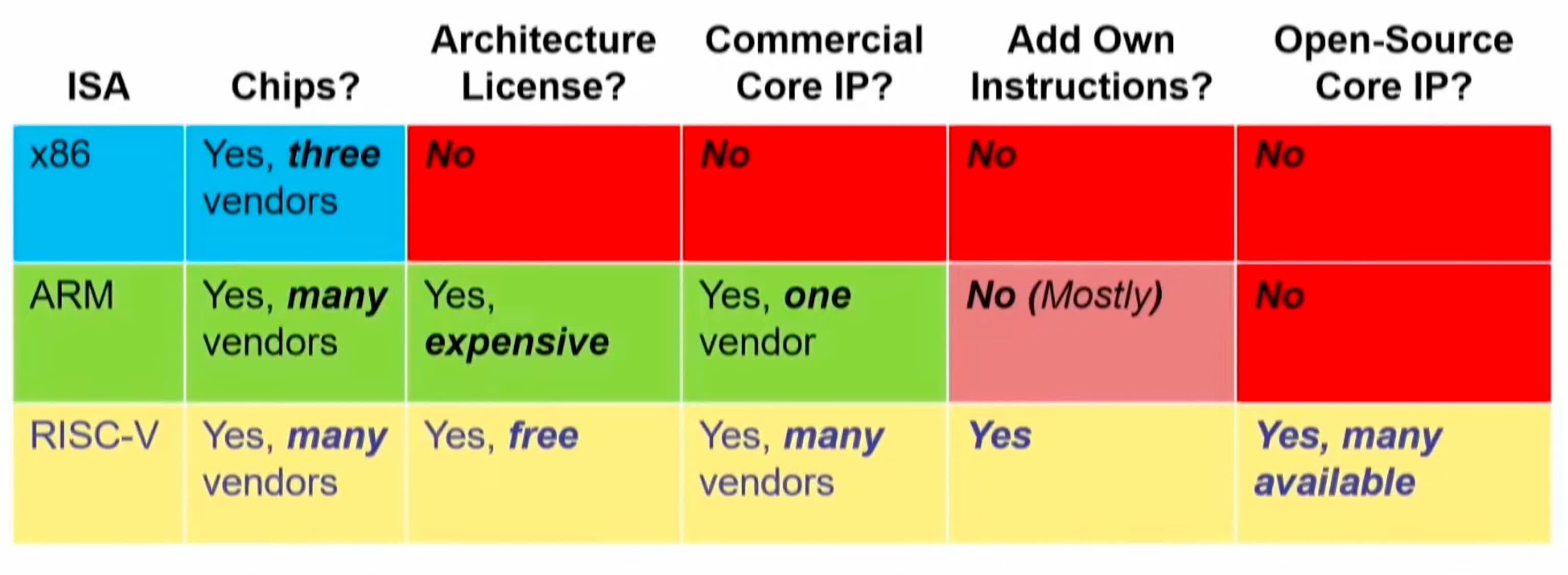Editor’s take: In most cases talking we’re large fanatics of RISC V. It does some issues rather well, handles many others smartly sufficient, and has transparent indicators of adoption and attraction. It meets an actual marketplace want in an cutting edge method, precisely what we adore to look from our era. So we are saying this from a place of affection – RISC V goes to have a large instrument downside. The excellent news is that it won’t subject.
First, some background. RISC V is an open-source instruction set structure (ISA), a “loose” choice to Arm. ISAs supply a suite of not unusual, essential however unglamorous “blueprints” for processors. Each and every processor wishes what an ISA supplies to do a little simple math. They take numerous paintings to design and take care of however don’t supply a lot end-product differentiation, because of this that the chip corporations who use them see nice merit in outsourcing this paintings to a 3rd celebration like Arm.
The entire level of processors is to run some type of instrument. And even if the ISA and the instrument developer are a number of layers aside, ISAs are so elementary to chips that adjustments in an ISA create actual instrument issues.
Editor’s Observe:
Visitor writer Jonathan Goldberg is the founding father of D2D Advisory, a multi-functional consulting company. Jonathan has evolved enlargement methods and alliances for firms within the cellular, networking, gaming, and instrument industries.
Take a look at downloading some in style programming language on a brand new Apple M1-powered MacBook and you’re more likely to to find that the instrument does now not paintings at the M1 or calls for some choice beta model. That is in fact relatively essential as it approach that any one working legacy code has to bear vital friction to modify to a brand new ISA.
ISAs are extremely sticky, converting to a brand new one is one thing that the majority chip corporations detest to do. For example, Qualcomm has been construction Arm-based chips for many years, and even if Arm is suing them, it’s not going that Qualcomm would ever transfer its core merchandise to RISC V as a result of it might render the entire instrument written for Qualcomm-based chips unwieldy, if now not unworkable. We don’t need to overstate this, switching isn’t unattainable, it is only arduous. As we stated above, it’s numerous friction.

Supply: Cadence
This may have been a large downside for RISC V to achieve adoption. Then again, it entered the marketplace at a nearly absolute best second. Simply as Arm went into hibernation within the coddling fingers of Softbank and misplaced its motivation to draw new shoppers, semis startups began sprouting once more for the primary time in a decade. That incorporates budding enlargement of US semis startups and an absolute explosion of them in China. None of the ones corporations had many years of legacy Arm dependencies and had been satisfied to head with the answer that price not anything.
However there’s one downside with all of this. RISC V is open-source, because of this that any one who needs to design a RISC V chip in large part has the versatility to make all varieties of adjustments to their particular implementation of the ISA. That signifies that everybody’s RISC V is a bit other. The RISC V group foresaw this downside and laid down a suite of compatibility necessities, and whilst everybody needs to abide through the ones, there is not any actual enforcement mechanism to forestall it from taking place.
Which means implementation from main standalone RISC V chip designers like SiFive, Andes and CodaSIP might all be somewhat other. Everybody complies utterly with the entire regulations, however some other people comply extra utterly. And throughout the many huge chip corporations with RISC V designs, who is aware of what’s going on.
This more than likely signifies that instrument written for one RISC V chip won’t run on every other RISC V chip, or no less than no run smartly.
As soon as upon a time that might had been a display stopper. The 1980’s noticed a complete battle of working methods whose end result depended very closely at the underlying chips and ISAs. This sort of instrument downside would have critically hobbled the attraction of RISC V, particularly for one of the vital extra bold initiatives in the market like CPUs for servers. However this time will probably be other. There are truly two the reason why this RISC V instrument fragmentation won’t finally end up mattering that a lot.

First, the way in which we use instrument has modified. Running methods subject lower than they used to as a result of the Web and cloud computing (they nonetheless subject however now not in the similar method.) As long as that underlying processor can deal with elementary internet site visitors, there will probably be a strategy to run instrument on it. There will be issues porting many not unusual instrument programs to RISC V, and as now we have famous frequently, that is the issue that stored Arm out of the information middle, however this is just a small a part of the marketplace.
The second one explanation why this won’t subject a lot is that such a lot of what RISC V is getting used for does now not depend on not unusual instrument – there are masses of RISC V chips being designed for IoT, business and different embedded programs. We expect RISC V will come to dominate this marketplace. Until any person comes up with an working machine for the Web of Issues (IoT), there truly is no use for a not unusual chip structure for those gadgets. And we’re company believers that there’ll by no means be an working machine for IoT.
Additionally it is fully imaginable that at some point RISC V’s instrument atmosphere will converge on extra appropriate answers. This will likely take years and be filled with varieties of issues — somebody keep in mind printer and GPU motive force incompatibility? — however it’s nonetheless most likely.
At this level, RISC V seems to be unstoppable. That could be a excellent factor. However it’s not a one-size-fits-all resolution, and it’s going to stumble upon its percentage of rising pains, and plenty of of the ones will happen in and round instrument compatibility. This doesn’t provide the similar barrier it as soon as did.
https://www.techspot.com/information/97420-what-next-risc-v.html